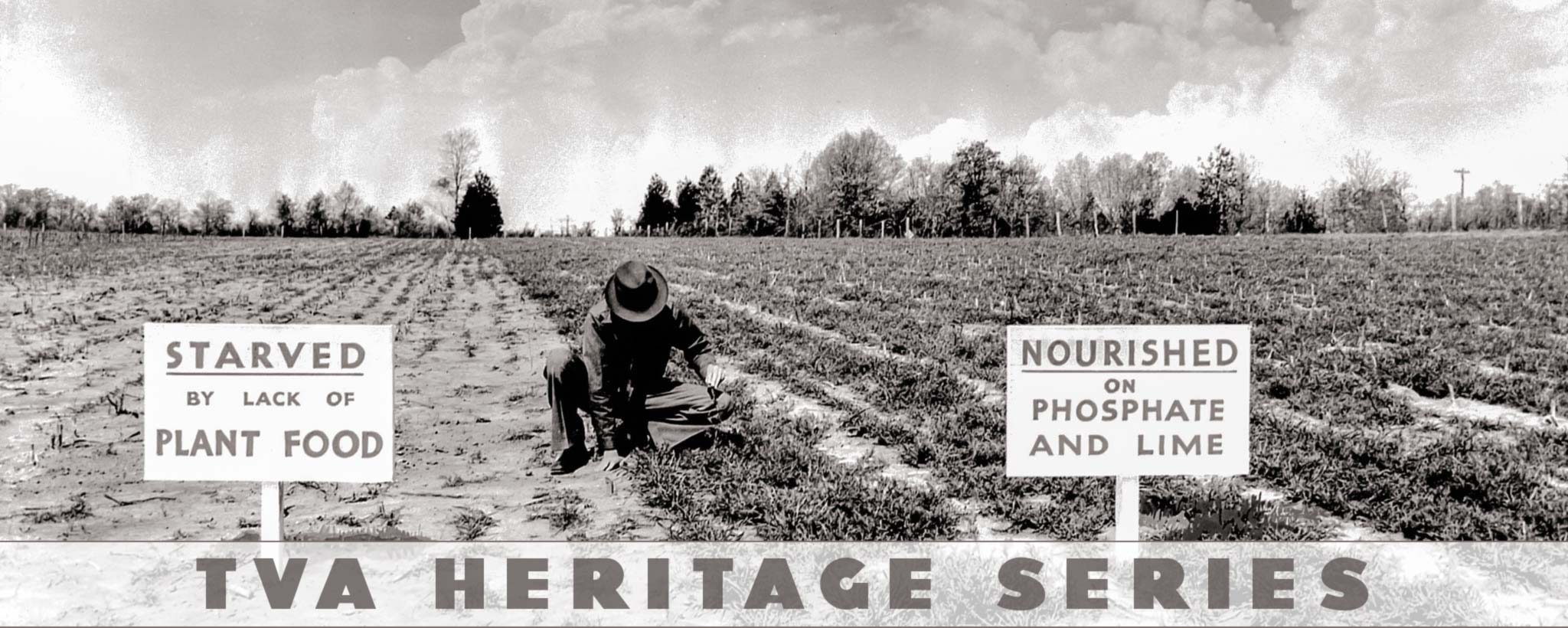
Bringing the Land to Life
In the 1920s and ’30s, much of the soil in the Tennessee Valley region was worn out to the point of worthlessness. Potent fertilizers developed by TVA helped bring the land back to life.
TVA, arguably, began as a fertilizer project.
At the outset of World War I, President Woodrow Wilson ordered the construction of two nitrate plants that would be powered by a hydroelectric dam at Muscle Shoals, Ala. The nitrates would be used to produce munitions for the war effort.
But nitrates are an important element in the production of fertilizer, too. When the war was over, private interests eyed these plants with the idea of converting them to the peacetime manufacture of fertilizer. Then Senator George Norris of Nebraska stepped forward to assert that Wilson Dam and the nitrate plants it powered could serve a larger public purpose.
Valley Desert
Norris argued convincingly that the plight of the Tennessee Valley region didn’t have a simple solution. Flooding was part of the problem; lack of adequate power was too. But the most obvious difficulty was the extremely poor state of the soil. In the 1920s and ’30s, much of the region resembled a desert. For those of us who grew up in a green, fertile Valley, that state of things is hard to picture.
When TVA came into being, Muscle Shoals’ nitrate plants were fired up again. They would be used to make fertilizer but not for the mass market. They’d show the private industry the way by demonstrating to the region, and ultimately the nation, the best methods of producing high-quality fertilizer.
TVA Director Harcourt Morgan, an old farmer himself, took charge of the project. At Nitrate Plant No. 2, two aged electric carbide furnaces were converted to phosphate smelters. The operation was dubbed the National Fertilizer Development Center (NFDC).
Soil Superheroes
By 1934, the NFDC was churning out pumped-up phosphate-based fertilizers whose names sounded as if they were inspired by comic-book heroes: Triple Superphosphate, Calcium Metaphosphate. As the names implied, these new products had several times the potency of the stuff farmers had been buying by the ton.
TVA distributed the fertilizers innovatively through county soil-conservation associations. These were voluntary gatherings of concerned farmers, who would select a test farm where TVA’s products and processes could be tried out. The farmer of the selected land got the fertilizer free (he paid only the freight costs); his neighbors got to see the sometimes-astonishing benefits of buying top-grade fertilizer; and TVA got a chance to test its products on the ground.
Farmers picked up on the new development. In the first 15 years of the fertilizer program, commercial sales of fertilizer in the region increased at a rate three times faster than in the rest of the country. And the results showed: acre for acre, farm productivity in the region reached levels never seen before. Forty years after the fertilizer program began, the farms of the once-ruined Tennessee Valley region were twice as productive per acre as the average American farm.
Global Growth
As the U.S. entered the postwar era, TVA fertilizer was being tested across a large part of the country (in at least 35 states, eventually). TVA Chairman Gordon Clapp was convinced of the project’s nationwide importance. “The long-range benefits of the TVA fertilizer program are not confined to any single group or area,” he wrote. “Rather, they accrue to producers, distributors, and users of fertilizer, regardless of whether or not they handle a single sack of TVA fertilizer. By strengthening the productive enterprise of farming and those who serve it, the TVA program serves the entire nation.”
Over the years, TVA’s work on fertilizers came into line with new national goals. By the 1970s, the TVA was finding innovative ways to make the production of nitrogen fertilizer less polluting.
In 1974, the project spun off from TVA, and its ideas were transferred to the newly founded International Fertilizer Development Center (IFDC), which got its start as a private nonprofit organization. In 1977, the IFDC was established as a Public International Organization by presidential decree, and even today, the IFDC continues to transform soil and lives around the globe. And it is still headquartered on TVA's Muscle Shoals reservation.